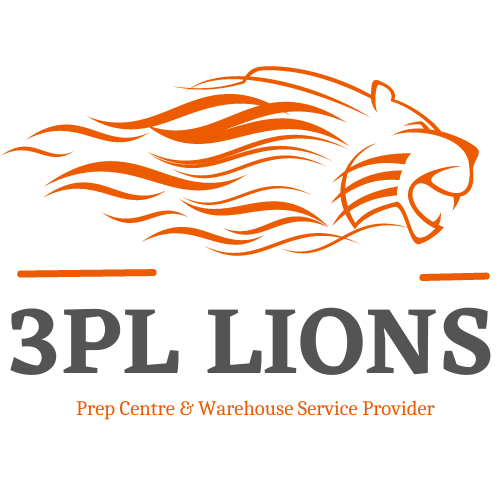From organizing inventory to shipping, ecommerce fulfillment is the backbone of your online store. Here’s how to choose the right fulfillment solution for your business.
When customers shop online, they expect their orders to be packed and shipped quickly. In fact, many cite convenience as the primary reason they shop online over in-store.
To manage this efficiently, you need a solid ecommerce fulfillment strategy. Some businesses handle orders in-house, while others partner with third-party services to manage inventory, package products, and ship orders. The best solution depends on your business size and product type. This guide explores ecommerce fulfillment basics, popular methods, and how to choose a fulfillment provider.
What is Ecommerce Fulfillment?
Ecommerce fulfillment is the process of receiving, packing, and shipping online orders. It involves managing inventory, packaging items, and coordinating logistics to ensure customers receive their products on time.
Fulfillment companies handle orders for multiple online retailers, operating strategically located fulfillment centers to store inventory near key cities and transport hubs, reducing delivery times.
How to Fulfill an Ecommerce Order
Smaller businesses often manage fulfillment themselves, while larger companies rely on third-party logistics (3PL) solutions. Dropshipping businesses, on the other hand, transfer the entire fulfillment process to the supplier.
Here’s a closer look at the three main fulfillment methods:
1. Self-Fulfillment
New businesses or those with unique needs often fulfill orders in-house. Using ecommerce platforms like Shopify, small businesses can manage orders, handle returns, and provide efficient customer service. However, managing inventory, customer support, and order processing may require additional staff as order volumes grow.
2. Third-Party Fulfillment
As businesses expand, they often outsource fulfillment to third-party providers. These partners store, pack, and ship products, often securing discounted rates from shipping carriers. The process becomes seamless: the retailer ensures adequate inventory, and the fulfillment partner handles the rest.
3. Dropshipping
In this model, the merchant doesn’t handle inventory or shipping. Instead, orders are forwarded to a supplier who ships directly to the customer. Dropshipping minimizes upfront costs but can lead to longer shipping times and less control over customer service.
Top Ecommerce Fulfillment Solutions
Choosing a fulfillment provider can be daunting, so we’ve listed eight top ecommerce fulfillment companies:
- Shopify Fulfillment Network (SFN)
SFN connects Shopify stores with Flexport to handle packing and delivery, offering seamless order fulfillment through a network of centers across the US. - Flexport
Flexport manages global logistics, offering competitive pricing, flexible delivery speeds, and comprehensive shipping solutions. - ShipNetwork
This provider offers 100% next-day shipping across the US and is ideal for subscription-based businesses. - Fulfillment by Amazon (FBA)
FBA is perfect for Amazon sellers, handling storage, packing, and returns with access to Prime’s two-day shipping. - ShipBob
ShipBob is a popular choice for direct-to-consumer (DTC) and B2B businesses, integrating easily with Shopify. - Red Stag Fulfillment
Known for its 30-day free trial and 100% order accuracy, Red Stag is ideal for businesses new to third-party fulfillment. - ShipHero
ShipHero offers fast shipping with strategically located warehouses, reducing delivery times. - ShipMonk
ShipMonk supports international fulfillment with warehouses in the US, Europe, and Canada, ideal for businesses shipping worldwide.
How to Choose an Ecommerce Fulfillment Provider
Here are key factors to consider when choosing the right fulfillment partner for your business:
- Industry Experience: Look for providers with expertise in your niche.
- Ecommerce Specialization: Ensure they have experience with online businesses.
- Pricing vs. Fit: Cost matters, but fulfillment quality impacts customer satisfaction, so balance both.
- Data and Analytics: Seek providers offering real-time tracking and smart inventory management.
- Warehouse Locations: Proximity to your customers reduces shipping costs and delivery times.
Ecommerce Fulfillment Process
Although each fulfillment company operates differently, most follow similar steps:
- Receiving and Storing Inventory: Fulfillment centers organize and store inventory, ensuring quick access when an order is placed.
- Packing and Shipping: Orders are picked, packed, and shipped, with centers often negotiating bulk rates with carriers to reduce shipping costs.
- Returns Management: Many providers handle returns and issue refunds, ensuring the process is smooth for the retailer and customer.
Benefits of Third-Party Logistics (3PL)
Outsourcing fulfillment can save time and money while allowing businesses to scale:
- Warehouse Flexibility: Adjust warehouse space as sales fluctuate.
- Expert Advice: 3PLs have logistics experts to manage supply chain issues.
- Time Savings: Outsourcing fulfillment lets you focus on growing your business.
When to Switch to Outsourced Fulfillment
Consider third-party fulfillment when:
- Sales fluctuate seasonally.
- Fulfillment tasks are taking up too much time.
- Infrastructure isn’t equipped for growth.
Ecommerce Fulfillment Challenges
Outsourced fulfillment isn’t for everyone. Businesses with limited cash flow or specialized products may find it challenging to use third-party solutions. If you’re only processing a handful of orders daily, it may be too early to outsource.
Conclusion
Outsourcing ecommerce fulfillment can be a game-changer for businesses with big goals and varying sales volumes. By choosing the right partner, you can improve efficiency, offer faster shipping, and focus on what matters most—growing your business.

